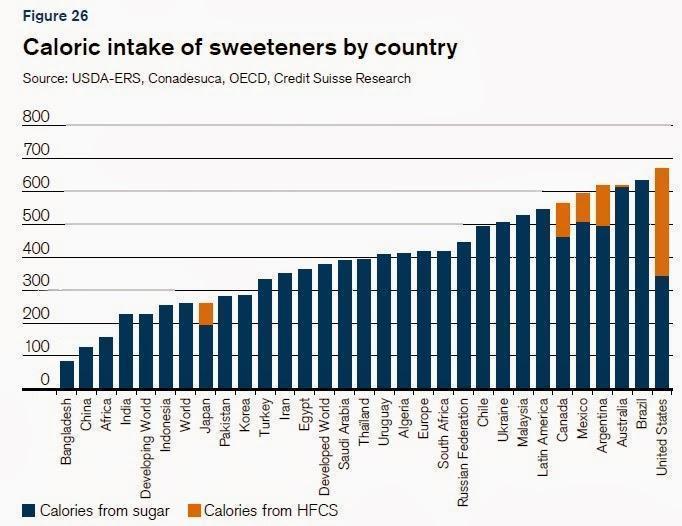https://www.ncbi.nlm.nih.gov/pmc/articles/PMC552336/
How did this get published in a peer-reviewed journal?
16-20 grams of fructose per day? That's a SINGLE serving of fruit. Not two, not three, not four. A single serving of fruit.
Fructose is readily absorbed and rapidly metabolized by human liver. For thousands of years humans consumed fructose amounting to 16–20 grams per day, largely from fresh fruits. Westernization of diets has resulted in significant increases in added fructose, leading to typical daily consumptions amounting to 85–100 grams of fructose per day. The exposure of the liver to such large quantities of fructose leads to rapid stimulation of lipogenesis and TG accumulation, which in turn contributes to reduced insulin sensitivity and hepatic insulin resistance/glucose intolerance.
How did this get published in a peer-reviewed journal?
16-20 grams of fructose per day? That's a SINGLE serving of fruit. Not two, not three, not four. A single serving of fruit.
The alarming increase in fructose consumption may be an important contributor to the epidemic of obesity and insulin resistant diabetes in both pediatric and adult populations. For thousands of years, the human diet contained a relatively small amount of naturally occurring fructose from fruits and other complex foods. Adaptation of humans to a high glucose/low fructose diet has meant that hepatic carbohydrate metabolism is designed to actively metabolize glucose with a limited capacity for metabolizing a small daily intake of fructose. The increasing application of high fructose sweeteners over the past few decades has resulted in a considerable rise in the dietary intake of fructose. A high flux of fructose to the liver, the main organ capable of metabolizing this simple carbohydrate, disturbs normal hepatic carbohydrate metabolism leading to two major consequences (Figure (Figure2):2): perturbations in glucose metabolism and glucose uptake pathways, and a significantly enhanced rate of de novo lipogenesis and TG synthesis, driven by the high flux of glycerol and acyl portions of TG molecules coming from fructose catabolism. These metabolic disturbances appear to underlie the induction of insulin resistance commonly observed with high fructose feeding in both humans and animal models. Fructose induced insulin resistant states are commonly characterized by a profound metabolic dyslipidemia, which appears to result from hepatic and intestinal overproduction of atherogenic lipoprotein particles. Taking into consideration that a typical western diet not only contains high levels of fructose but is also rich in both fat and cholesterol, synergistic interactions among these nutrients can readily occur leading to a greater degree of insulin resistance and dyslipidemia. In conclusion, emerging evidence from recent epidemiological and biochemical studies clearly suggests that the high dietary intake of fructose has rapidly become an important causative factor in the development of the metabolic syndrome. There is an urgent need for increased public awareness of the risks associated with high fructose consumption and greater efforts should be made to curb the supplementation of packaged foods with high fructose additives.


